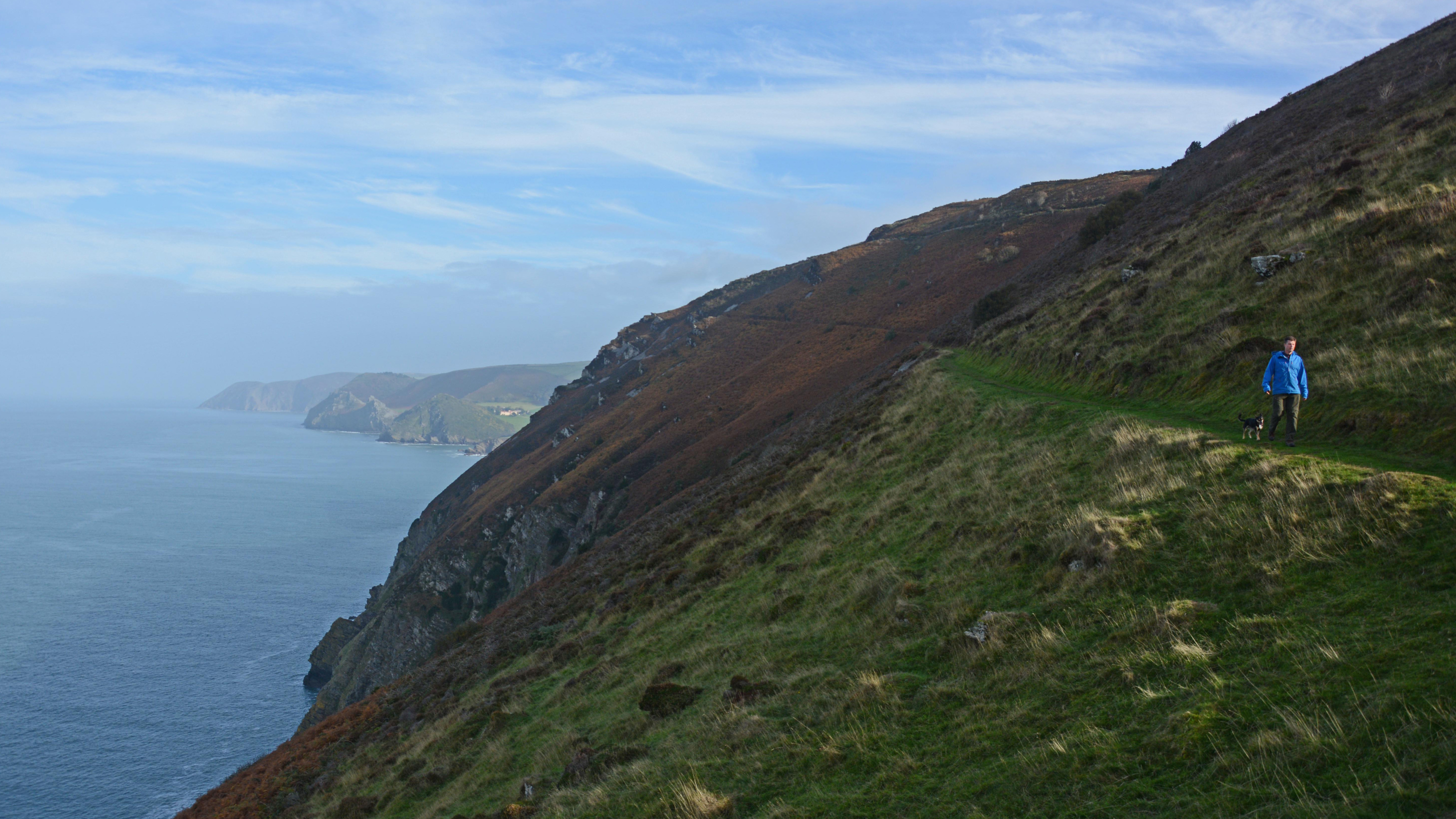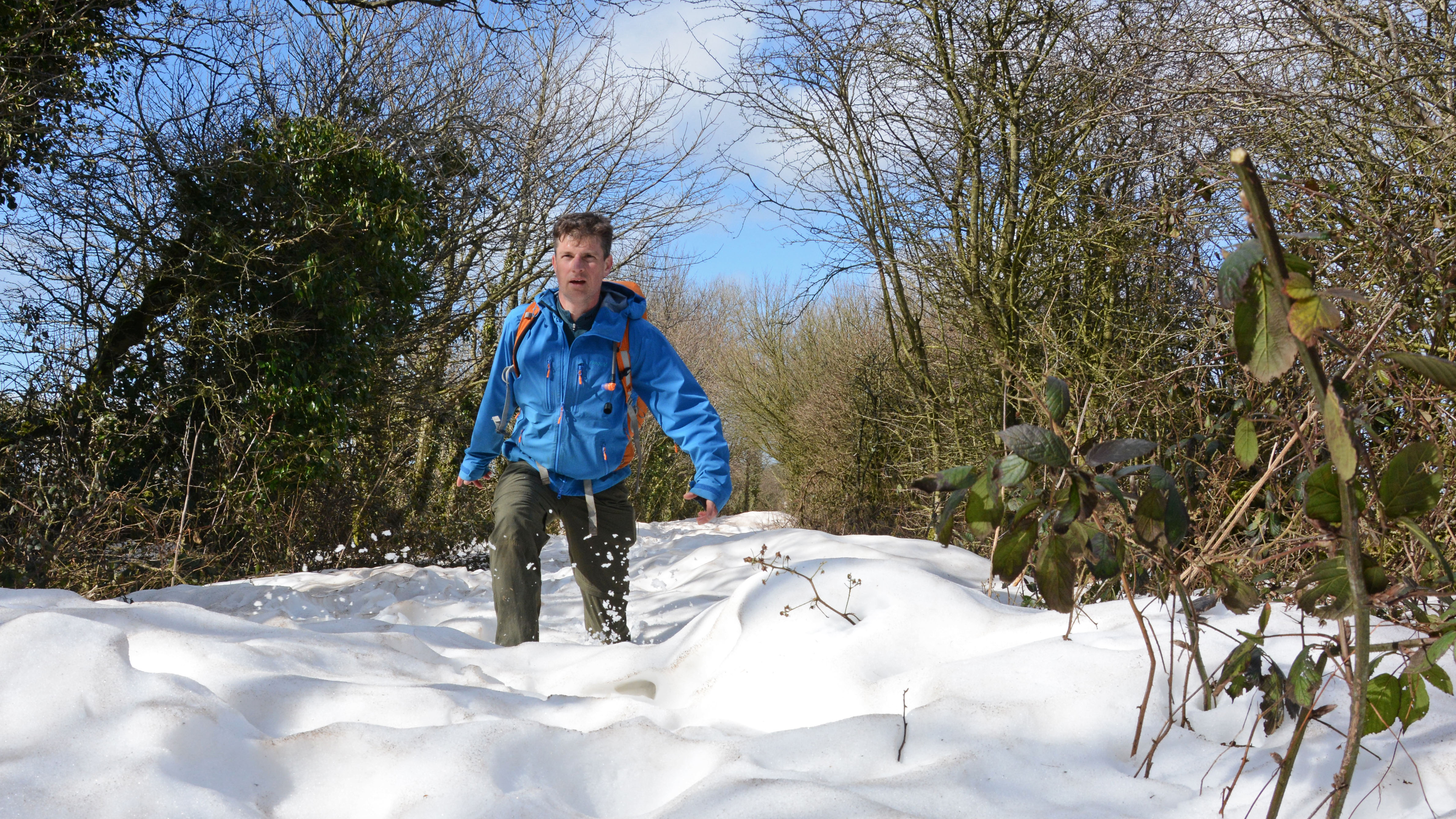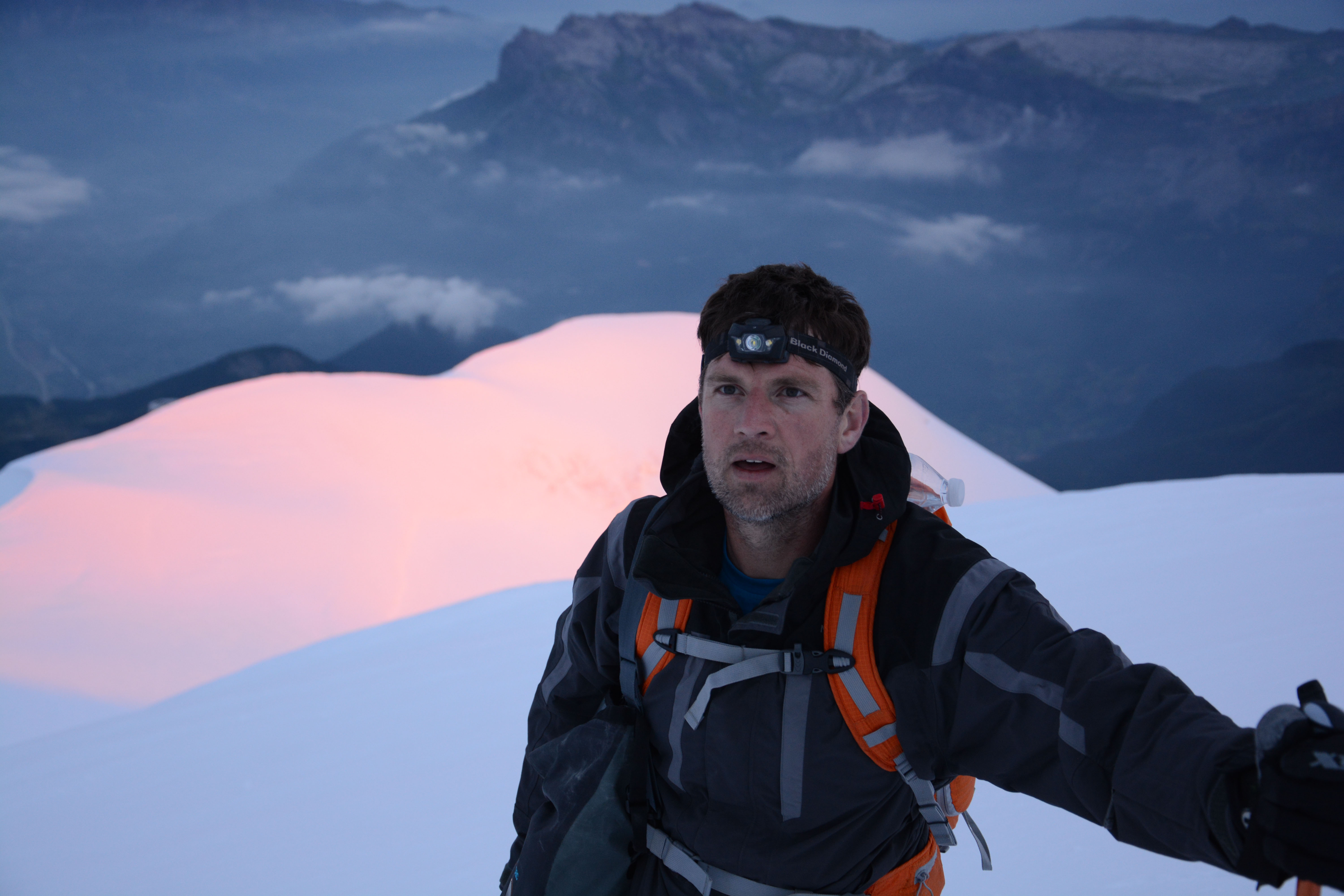I’m a walking book author, and these are my top 14 hiking tips for beginners
Hiking is the most popular outdoor activity on the planet, but are you doing it right?


Hiking, walking, trekking, tramping, rambling, ambling, backpacking, bushwalking, bimbling… there’s a rich variety of verbs to describe the act of travelling by foot on trails and paths, purely for recreational enjoyment – which is unsurprising, since it’s the most widely participated-in outdoor pursuit on the planet.
Each of those words means slightly different things to different people, and many are geographically specific, but no matter where in the world you are, wild walking is typically the first adventure activity any of us experience, and the one we keep doing for the entirety of our outdoor-active lives.
My earliest outdoor experiences came through my parents taking me walking, from weekend days wandering through woodlands to multiday backpacking trips through the hills and along the coastlines of England, Ireland, Scotland and Wales. It began so long ago I can’t remember whether I was an enthusiastic early years embracer of these escapades, but decades later I still love hiking and take my own kids out on trails as often as possible. And I’ve ended up as a walking book author, so it can’t have scarred me too much.
But, not everyone is lucky enough to be brought up with easy access to the countryside, or parents who encourage outdoor pursuits. And, although hiking is ostensibly a very simple pursuit, walking adventures can be much more fun and far less pedestrian with good planning. Over the years I’ve learned a few tips and tricks on how to keep hiking experiences interesting, comfortable and enjoyable.

Dunstanburgh Castle, Northumberland
1. Have an objective
Not every walk has to be an epic odyssey to the top of a massive hill or mountain, but it’s good to have a defined destination rather than just a random turn-around or end point. The objective of your walk could be a viewpoint, a hilltop trig, peak or summit (small or large). Or it might be a particular pub that offers something bit different, or a castle, cave, ruin, church, picnic spot, seal or bird colony, place of historical or geological interest, or a secret wild swimming location – it’s up to you, but setting yourself a mission to get somewhere or see something specific makes a meander so much more interesting and rewarding for everyone involved.

An enticing trail in the High Peak, Yorkshire
2. Don’t get lost
This is stating the obvious, I know, but if you’re new to hiking and not particularly confident about your ability to navigate in the outdoors, there are ways of making things a bit easier for yourself that make getting lost almost impossible. For staters, it’s best not to rely entirely on digital devices, and to take a proper map with you on every walk, just in case you lose power/signal/your entire phone. But… having a map is no use if you can’t read it; so planning a route that is very easy to navigate is the best bombproof way of ensuring you don’t go astray.
Trails that trace water are excellent for this. If you’re walking along a footpath that follows a river, a stretch of coastline or goes around a lake, it’s really hard to go wrong – just keep the wet stuff on your left or right, depending on your direction of travel. Easy peasy. And there are thousands of great walks around the seashore and along riverbanks and the edges of lakes out there.
Get all the latest news, reviews, deals and buying guides on gorgeous tech, home and active products from the T3 experts
Another option, though, if you’d rather explore some inland hills, is to walk a section of a well-established long-distance path, such as the Pennine Way or West Highland Way, where waymarkers are (usually) found at most junctions, helpfully pointing you in the right direction.

3. Take a torch
The best-laid plans can, of course, go completely belly up, with minor setbacks or missteps causing delays. And time schedules can also get changed because something serendipitous happens during a walk, like you encounter wildlife and spend ages watching it, or discover the best swimming spot or backcountry pub you’ve ever come across, and can’t tear yourself away. Or, you simply might be slower at moving across the landscape than you thought you’d be.
When these things happen, darkness can descend while you’re still out on the trail, and that is when you will be very pleased that you read this and packed a good headtorch or little flashlight to help you find your way home. I always keep a headtorch and spare batteries in my daypack for this very reason, and also because it’s handy to have a light source available if you come across an cave or tunnel that’s begging to be explored.

4. Choose your trail buddies carefully, and don’t be afraid of walking alone
It’s always great to share a hike with family and friends, and I love seeing members of different generations out treading the trails together, but to really enjoy the experience you do need to be careful who you agree to go walking with. Because nothing knackers a proper hike like a whinging companion, or someone whose walking pace is dramatically different to your own. It’s far better to go solo than to spend all your time waiting for an unenthusiastic buddy to catch you up, or listening to them whine about not wanting to be there. In fact, I find solitary walking very therapeutic, and I enjoy the headspace that being out in the wilds on my lonesome provides. If in doubt, go with a dog – they’re always good company.

Sharing quality time on the trails with family and friends is a great way to connect and create memories
5. If the shoe fits…
If you are planning on tackling technical trails and wet hillsides with a heavy backpack on, especially if conditions are cold and inclement, then investing in good, protective footwear will massively enhance your enjoyment of the experience. The best hiking boots offer good ankle support, great grip and hardcore protection from the elements and any aggressive flora and fauna you might meet out there.
It’s important not to overdo it, though. If you’re planning alpine adventures in winter, then you will need something serious like the Lowa Tibet or Mammut Taiss, but for most coast and countryside escapades a lightweight boot like the Salomon Cross Hike 2, Inov-8 Roclite G345 GTX or the Keen NXIS Evo Mid is perfect. And most of the time, especially from late spring through to early autumn, a really good walking shoe is a much better option than a boot for day hikes when you’re not carrying much weight.

6. Don’t retrace your footsteps
I hate hiking back to my start point along the exact same path I walked out along earlier, and will only do this if there’s a really compelling reason go to a particular place and just one route in and out – like the hike along the River Dart to Sharrah Pool on Dartmoor, a sensational stroll to a cracking wild swimming spot reachable by one path only.
The UK is criss-crossed with so many trails, tracks, footpaths and bridleways you can almost always plan a circular route if you get a map out and do some research. Small peninsulas are excellent for doing loops, because you can usually follow the coast path one way for all the best views, and then take the shortcut back across land to your starting point. Circumnavigating a lake (or a small island) is another failsafe way of avoiding having to retrace your footsteps.
Linear, point-to-point adventures – starting in one place and finishing in another – are also very enjoyable. You can walk further in on direction and get public transport back to where you began, if you left a vehicle there, or directly home if not.

Tracing Afon Glaslyn in Wales, during a riverside ramble
7. Avoid the honeypots (or time your hike carefully)
Popular paths are, of course, famous for good reasons. Trails such as the Four Waterfalls Walk in Bannau Brycheiniog / Brecon Beacons National Park, the Stepping Stones stroll in Dovedale in the Peak District, and the lake-side loop of Buttermere in Cumbria are stunning. But they are also absolutely inundated with people every weekend from April to October, which puts pressure on facilities, and makes it hard to find a place to park or any proper peace and tranquillity while you’re out and about. In my experience, it’s best to visit these hiking honeypots out of season (when the rivers and waterfalls are far more impressive anyway) or early in the morning during the week if you can.
If you’re getting into hiking to explore wild places, engage with nature and enjoy some immersion in green spaces – with all the mental health benefits such experiences bring with them – then it’s better to seek out some quieter corners of the country to wander around during the warmer months of the year. This isn’t as hard as you might think – even in incredibly popular outdoor areas like the Lakes, it’s easy to find less-trafficked trails if you avoid the more famous fells.
Try googling ‘[insert the area you’re visiting] top walks’ and then completely avoid visiting the locations mentioned in the first few results. Well-researched locally focussed walking books like those published by Pocket Mountains can give you a good steer about alternative routes to ramble and trails to trace, and open-source online resources such as komoot, which collates content uploaded by fellow users, can be a rich source of inspiration and a font of up-to-date information about the conditions of footpaths and signage.

Pen y Fan summit on a quiet weekday morning
8. Walk within your limits
If you’re only just getting into hiking, start off by doing routes that are around 10km/6 miles in length, with a modest amount of ascent involved. If you bite off too much for your first few forays, you’ll hate the whole experience and likely hang up your hiking boots forever. Start off small and build up to bigger adventures if you want to.
This is especially important if you have kids in tow – it’s very easy to put young people off the idea of walking at an early age, and extremely difficult to get them back into the outdoors if they’ve had a rubbish experience. If everyone finishes a walk feeling like they’ve achieved something, but they’re still smiling and not completely shattered, that’s a win.

A challenging but rewarding section of the South West Coast Path
9. Take trail treats
Every walk is made immeasurably better by having something sweet to eat – either as a little reward to yourself for getting to the top of a climb, or just to keep you going until lunchtime. Trail mix with dark chocolate chips is a personal favourite, but each to their own.
10. Pack some paper
When it comes to emergency supplies, packing some paper is a priority. Everyone gets caught out from time to time, far from a toilet, and if you end up in a situation where you have to make like a bear, you will appreciate having some soft paper to hand (rather than resorting to leaves). Remember to dig a hole, at least 50 metres from the nearest waterway, and burn the paper if it’s environmentally safe to do so or, if conditions are dry, pack it out in your litterbag.
11. Bring binoculars
While it’s preferable to keep your kit as lean and light as possible, certain tools are well worth their weight, and if you enjoy spotting birds and other wildlife, then it’s great to have a good pair of binoculars in your backpack.

Don't let cold weather stop you getting out on the trails
12. Venture out at different times, the whole year round
Very often, the best walking routes are the ones closest to you, not least because you don’t need to drive to the trailhead. Repeatedly walking the same route at different times of the day and stages of the year never gets boring though, because it’s a brilliant way of seeing the seasons slowly turning, the flora revolving through a spectrum of colours and the birdlife changing as some migratory species arrive and others take off. Try hiking a familiar route during the hours of darkness too, just to see how different it seems, sounds and even smells at night, when a whole new shift of animals come out to play and prey.

13. Be nice and share the trails
Although some old-school ramblers like to think otherwise, walkers are not the only people who have the right to explore and enjoy the outdoors. On paths, bridleways, tracks and trails you will often encounter runners, backpackers, mountain bikers, horse riders, wild swimmers, rock climbers, peak baggers, paddlers, forest bathers, foragers, photographers, geocachers and all sorts of other people.
Mutual respect and friendliness is all part of the outdoor code. If people are behaving badly (littering, racing around corners with disregard for other trail users), have a word, or report it. But most outdoorsy people are great. Say hello. Have a chat. Learn from each other. Be inspired to try something new.

The Old Nags Head in Edale is the official start/finish of the Pennine Way
14. Put a pub on the route
I’m a bit biased here, having recently written a whole book about great pub walks, but the very reason I did that in the first place is because I firmly believe public footpaths and public houses go together perfectly and that there are very few activities in the world better than heading out with good friends for a walk that visits or ends at a great pub.
And this pleasurable experience can be enjoyed all year round, whether you’re recounting trail tales over ales in sun-splashed beer gardens, or cuddling a stout while huddling around a roaring bar fire, having just come in from the cold. Cheers – I look forward to seeing you out there!

Author of Caving, Canyoning, Coasteering…, a recently released book about all kinds of outdoor adventures around Britain, Pat Kinsella has been writing about outdoor pursuits and adventure sports for two decades. In pursuit of stories he’s canoed Canada’s Yukon River, climbed Mont Blanc and Kilimanjaro, skied and mountain biked across the Norwegian Alps, run ultras across the roof of Mauritius and through the hills of the Himalayas, and set short-lived speed records for trail-running Australia’s highest peaks and New Zealand’s nine Great Walks. A former editor of several Australian magazines he’s a longtime contributor to publications including Sidetracked, Outdoor, National Geographic Traveller, Trail Running, The Great Outdoors, Outdoor Fitness and Adventure Travel, and a regular writer for Lonely Planet (for whom he compiled, edited and co-wrote the Atlas of Adventure, a guide to outdoor pursuits around the globe). He’s authored guides to exploring the coastline and countryside of Devon and Dorset, and recently wrote a book about pub walks. Follow Pat's adventures on Strava and instagram.